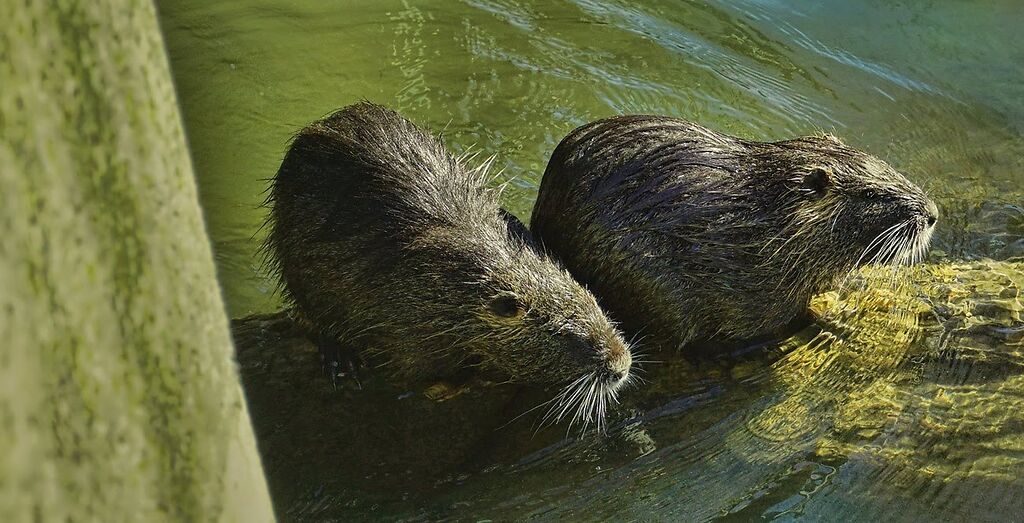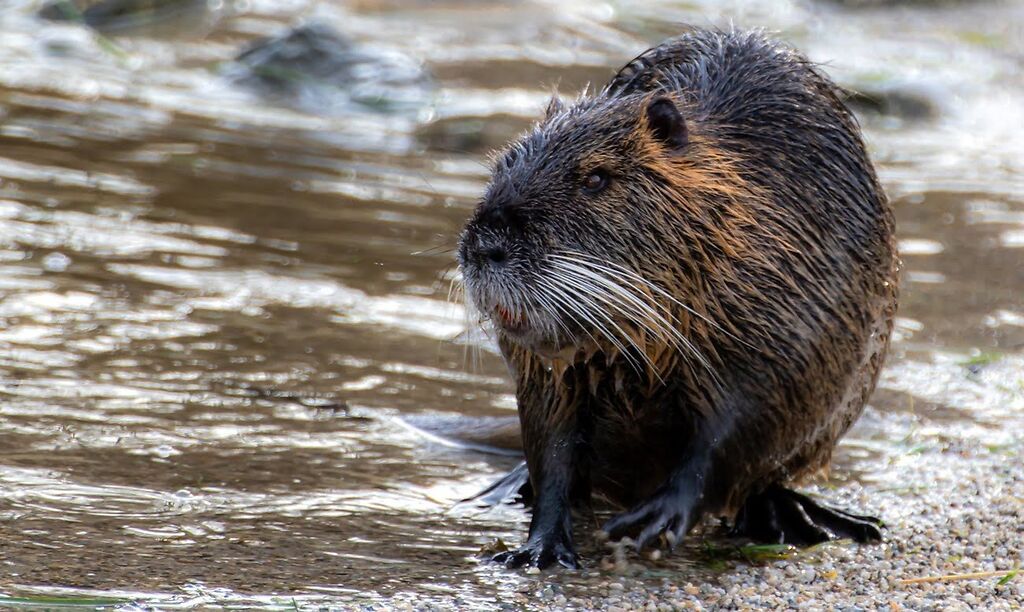The Nutria
The Nutria, also known as the Myocastor coypus, is a rodent that is originally from South America but has been introduced successfully to North America, Asia, Europe and even Africa by the fur industry. The nutria is also known as coypu and river rat.

Biology
Nutria’s diet consists mostly of plants, but because it is also an opportunistic eater it actually is classified as an Omnivore. These rodents are also big eaters. They can consume up to a quarter of their weight in a day. The nutria is a lot more agile in the water that it is on land. That is the reason you are more likely to find nutria close to a body of water. Large nutrias can get to somewhere around 20 pounds, but that is not the average by far; the average nutria weighs about 15 pounds.
The females are smaller than the males. Their hind feet are webbed and that allows for better speed and control when in the water, but they also will slow nutria down on land. Their facial features are also made for the water; their nose and eyes are set higher on nutrias than in other rodents, this allows them to keep them out of the water when swimming. If that were not enough, their mouths and nostrils can close under water to allow the nutria to feed there.
Reproduction
Nutria can reproduce at any time of the year though most of it occurs during the early summer and late winter. The reason they can sometimes become pests is because they not only reproduce all year, but they also reproduce fast. Nutria reaches sexual maturity at the average age of five months though it has been reported earlier in a lot of cases. The period of pregnancy is just above 4 months and the average litter is four to five nutria pups; however nutria can have up to 13 pups in one litter. Add to that the possibility of 3 liters per year and you can see the reason why they can easily become pests pretty quickly. Overpopulation is a problem in several areas especially because they destroy the habitat of other animals that may be native to that particular area.
Nutria also mature very young and will be away from the mother at the early age of four months. In areas where overpopulation is a problem that can be a blessing because at that age they are more likely to fall victim to a predator. The list of predators however is not a large one, in fact there are only two large predators on the list, and one of them is humans. The second predator on the list is alligators and in Florida that is a very real threat to the nutria.

Diseases Carried by Nutria
Because of their preferred environment Nutria can carry some diseases that may affect humans as well as livestock. Pasteurellosis, leptospirosis and paratyphoid are among the most frequent diseases found in Nutria. Livestock can get diseases by drinking from water where the nutria has been prevalent. These areas are full of contaminated water with nutria droppings.
Common Complaints
There are a couple of complaints reported about nutrias. The first one is the destruction of the habitat of other species, and the second one is the amount of Nutria in the area. They both are interconnected because with the overpopulation the habitat of other species gets smaller and it is easily destroyed. If you do have nutria overpopulation in your area you should call a professional wildlife remover. They are able to better manage the removal of these rodents, and they will do so in a safe manner.
